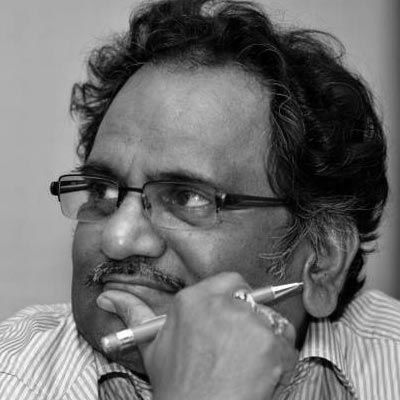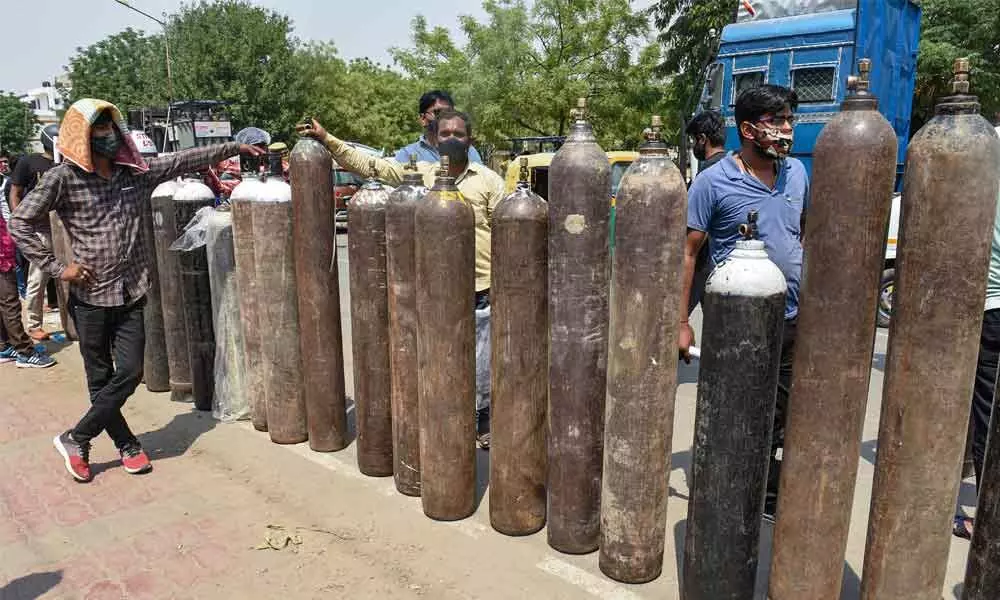Live
- Am I Pregnant? Symptoms to look out for
- iOS 19 and LLM Siri Delayed Until April 2026: What to Expect
- NGO brings hearing impaired youth into professional path
- Mass Kolatam at SVU enters Wonder Book of Records
- Koil Alwar Thirumanjanam on Nov 26
- 16 gold medals, 485 degrees awarded to students
- TBS held Karthika Vana Mahotsav
- 135 newborns and 28 mothers die in 7 months
- Garena Free Fire Max Redeem Codes for Today (November 25): Unlock Free Skins, Diamonds & More
- NCC 2nd officer Narendra Babu secures Best Officer award
Just In
Maximum governance that fails to give oxygen


Maximum governance that fails to give oxygen
Vote is the oxygen for power seeking political parties. Oxygen is the life for voters. Vote in Telugu spells like O2. O2 is chemical name of oxygen. ...
Vote is the oxygen for power seeking political parties. Oxygen is the life for voters. Vote in Telugu spells like O2. O2 is chemical name of oxygen. Rulers want your vote, and you want O2.
The Government and entire public in India knew that coronavirus was a pandemic and "disaster" by March 14, 2020. Within 10 days, whole nation suffered severe lockdown. The experience demands real improvement in medical infrastructure by many times than existing. Early in the pandemic, it became clear that oxygen would be one of the most precious commodities in the battle against the virus. The Governments knew it.
An Empowered Group of 11 Officers, formed by the Government suggested measures to implement an effective Covid response. That group warned the government of possible shortage of oxygen in April 2020, and again in November 2020. Another committee with nine members was set up study and suggest ensuring sufficient supply of oxygen. The demand increased from1000 metric tonnes per day to 3000 during the peak of Covid in September. The present pathetic situation proves that government was non-responsive to these alarming bells.
By April 2020, Centre knew that oxygen generated in India is not at all sufficient if the demand is increased and all formal requirements were completed to sanction and establish the Pressure Swing Absorption (PSA) Oxygen plants in 150 District Hospitals across the nation. The PSA technology separates gases from a mixture in the atmosphere to generate concentrated oxygen that can be supplied to hospital beds through a pipeline, negating the need for hospitals to buy pressurised liquid oxygen from other sources.
From April to October in 2020, the Government machinery did not act. It took the Narendra Modi government eight months to invite bids for new oxygen generation plants. On October 21, the Central Medical Services Society, an autonomous institution under the Union health ministry, floated a tender online calling for bidders to PSA oxygen plants. And till recently there is no whisper as to what happened to these tenders. Why was the tender process delayed? It was not caused by a lack of funds: the outlay for 162 oxygen plants (12 added later) is just Rs 201.58 crore. Long back money was allocated from the PM-Cares corpus.
The Central Medical Services Society is yet to say anything on the status of 162 plants. For long they gave the stock answer is "being closely reviewed for early completion of 100 percent of the plants." The fact that this society was not answering questions about their status proves that they are nowhere near competition. This is height of inefficiency, non-responsiveness and complacency of in the governance. The Scroll.in claimed that when it called 60 hospitals across 14 states the responses proved that only 11 units were installed and only five of them are working. After publication of this story, the Health Ministry published several tweets, saying "Out of 162 PSA Oxygen plants, 33 have been installed….By end of April, 2021, 59 will be installed. By end of May, 2021, 80 will be installed." It means that less than half the number of new sanctioned plants will be installed by end of May. This is clear case of complacency and lack of responsibility.
Now, the central government said that another 100 oxygen plants will be established out of the PM-Cares fund. Disaster Management is a law, there is a department, we have disaster continuously around us since more than a year. Forget about management, the government behaves as if it does not know that a disaster is round the corner. It is pathetic that Delhi High Court had to remind both national and state governments of its powers on Disaster Management Act to manage the supplies of Oxygen. Is it not a big failure of both the governments and all its departments?
The Delhi High Court on April 25 warned that it will "hang" any person who tries to obstruct oxygen supplies to hospitals. A bench of Justices Vipin Sanghi and Rekha Palli said, "You [be] rest assured that we will hang that man. We will not spare anyone." It was during a special three-hour-long hearing on a weekend holiday on the issue of escalating oxygen crisis in various hospitals in Delhi. The petition was moved by a group of private hospitals from the national capital amidst the shortage of oxygen supplies. The court called it was not wave, but tsunami.
The Court also noted the report of team of scientists from IIT Kanpur that a peak of this Covid was apprehended in mid-May. The HC asked the question which media is not asking and people have no scope to seek, "how are you going to tackle the augmentation of medical infrastructure like beds, oxygen, ventilators, medical staff and medicines, to manage the crisis. Tushar Mehta told the court that Government of India is importing oxygen.
Delhi needed and demanded 700 metric tonnes but Centre allocated 378 mt. Eight PSA (Pressure Swing Absorption) oxygen plants were planned for Delhi, but only one has been set up as per admission of the Union Health Ministry before the Delhi High Court. He was not sure whether the plant was operational. The Joint Secretary (Health), Nipun Vinayak, told the apex court that only one plant, at the Burari Hospital, has been installed so far. Three plants are stuck up with paperwork, while four are expected to be installed by April 30. BJP is blaming Delhi Government for this.
Madhya Pradesh needed huge quantum of oxygen, but the state has done little to augment its own oxygen production capacity, and authorities have woken up rather late to the need to ramp up infrastructure. Not only states but the Central government also took eight months into the pandemic to float a tender for 162 PSA oxygen plants across India, of which only 33 plants have been installed so far, as reported by news webportals. Delhi was making frantic appeals to centre and PM as it alleged that Uttar Pradesh and Haryana are blocking the supplies.
Very fact that six private hospitals were constrained to file writ petitions in High Court seeking oxygen supplies which could have been solved by a phone call or written request had there been a responsive and responsible government, proves total absence of governance in National Capital. Maharaja Agrasen Hospital, Jaipur Golden Hospital, Batra Hospital and Saroj Super Speciality Hospital are supposed to attend to patients, but they are before the High Court over shortage of oxygen for treating seriously ill COVID-19 patients. "You (Centre) had assured us (on April 21) that 480 MT per day will reach Delhi. Tell us when will it come? We want a definitive date. The 480 MT per day is still to see the light of the day," the bench said, adding that citizens of Delhi cannot be left to die like this.
One can see that the centre was trying to blame the states. The Centre told before court that one of the reasons for the shortage in supply was due to the Delhi government not providing cryogenic tankers for picking up liquid oxygen. Delhi government told the court that it was not an industrial state, and therefore, did not have access to such tankers. As the Court advised, it is for both state and centre to work together.
This delay could be result of distance between Delhi and production centres. Distribution network is both stressed and stretched. Real issue is bad planning. Delhi should get from seven states, which are than 1,000 km (625 miles) away, the court was told. Because of the hazardous nature of the substance, all liquid oxygen must be transported in a limited number of specialised tankers, requiring advance planning. They should have planned two or three weeks in advance. One year of suffering from Covid pandemic did not teach any alertness to either centre or states.
(The writer is Professor of Law,Bennett University and former Central Information Commissioner)

© 2024 Hyderabad Media House Limited/The Hans India. All rights reserved. Powered by hocalwire.com






